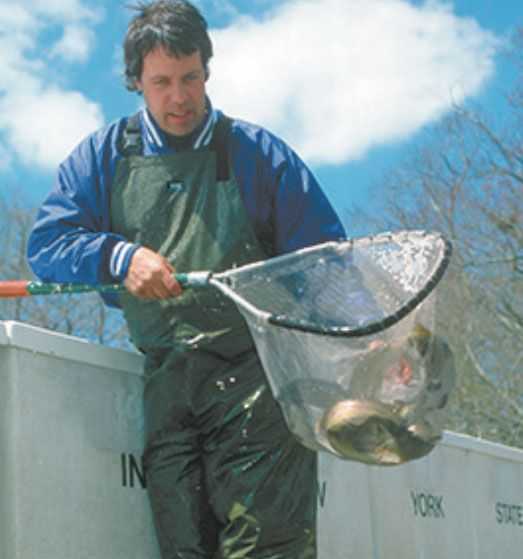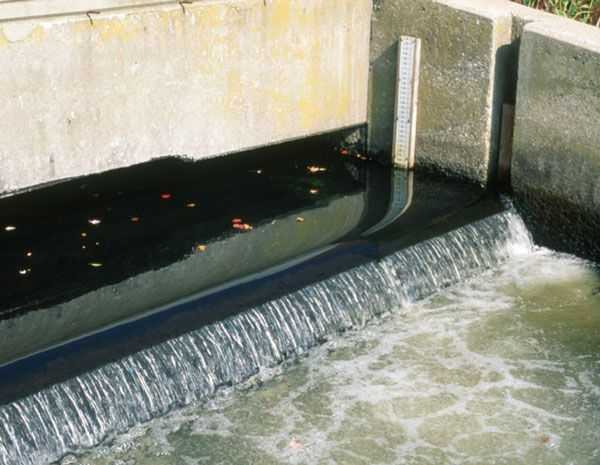It was one of those mornings when the wind wants to blow right in your face no matter where you stand. You know the type of day – blustery and cold, dark and damp, loud like a freight train – in other words, a typical April morning for trout in the tri-state area.
By 9:00 a.m., I was already back in the car warming my hands when a new angler showed up. Casting straight into the wind, he proceeded to catch two brownies in the span of about ten minutes. Needless to say, I was at his side almost immediately after the second fish, which appeared to measure about 16 inches long.
“What are you using?” I enquired.
“Kastmaster spoon,” came the response.
“That’s a tough lure to work in this lake without picking up weeds,” I stated.
“It’s the only thing that’s going to catch fish here today,” he smiled back, sending the metal lure a good distance off the shore and setting the hook on fish number three.
I jogged back to my car, popped open my tackle box and tied on a one-eighth-ounce Kastmaster. Within five minutes, I hooked my first trout of the morning.
HEAVY METAL TROUT
I’ve been counting on lightweight tins weighing 1/8 to 1/2-ounce to produce a high percentage of my early-season trout ever since that windy day more than a decade ago. It’s just one of several tricks that help keep me in the game under blustery conditions. To this day, I still opt for a small Kastmaster most of the time but, depending on the strength of the wind, I might also choose a Daredevel, Sidewinder, Little Cleo, Johnson Sprite or even a small Hopkins Shorty. The idea is to use the lightest lure you can get away with and still cast a reasonable distance.
Using casting spoons for trout isn’t a new idea but it is a very productive early-season technique that many anglers overlook. These lures have a lot of flash and they allow you to reach the fish even when tossed into the teeth of a gale. As a rule, occasionally broken, silver tins work well for rainbow trout while chrome or gold-colored tins score best with browns. Brook trout seem partial to chrome but I’ve also had a lot of luck tempting them with yellow spoons sporting red dots.
The key to enticing early season trout with small tins is to retrieve these lures as slowly as possible without catching weeds. To do this, you’ve got to experiment with retrieval speed to come up with the right combination. In shallow water areas I like to hold my rod high, sometimes even over my head, as I reel spoons back to the boat or shore. This helps raise the lure in the water column, allowing the slowest possible retrieve while keeping the hooks clean. As the season progresses and the waters warm, you can reel in a bit faster but slow and steady is the key during the first few weeks.
WINDY-DAY BAIT TIPS
There are days during the early season when heavy metal is just about the only way to get a line out to the fish, but for those anglers who love to play bait and wait, a few options still remain when the breeze is somewhat less than a gale.
Using a weighted float is one trick that works well with wind gusts of less than 20 knots. These can be purchased at most any tackle shop. They sit a little lower in the water than traditional floats, but they will carry your line a considerable distance when cast into a moderate wind. Because the wind will blow the float across the surface at a fair speed, lengthen the distance between the float and hook from the traditional two or three feet to five o r six feet and add a small split shot about eight inches above the bait to help keep it deep.
Anchoring your bait can also produce some surprising scores under wind-blown conditions. I stumbled across the productivity of bottom-fishing for trout out of necessity one morning. I had been casting from shore with Berkley Power Nuggets and was scoring nicely when the wind suddenly kicked up. Within minutes the action died and I could no longer reach my hotspot. With nothing to lose, I tied on a one-ounce bank sinker, placed my bait on a small hook positioned three feet above the weight, and cast out as far as I could. I caught and released over a dozen fish in the next two hours, hooking up on virtually every cast. With this rig, the sinker settled in the weeds but keeping a tight line held my offering above the grass and right in the feeding zone. It proved a great way to save the day and has worked on numerous occasions since.
HIT THE SPILLWAYS
Of course, getting out of the wind makes a great deal of sense, but lee shores don’t always offer access or hold great fishing potential. There is, however, a great place to tuck in when the wind blows strong across your favorite mill pond or small reservoir – the spillway area where the flow exits the lake (if legal access is available). On small waters, spillway areas are usually tight, requiring very short casts to reach the fish. They almost always hold a few trout that slide over the dam immediately after being stocked and relatively few anglers recognize this as productive water so you can sometimes have such areas all to yourself. Being lower than the main lake or river, spillways are usually buffered from the wind.
There are three kinds of spillway water where trout tend to hold. The first is in the pocket water to be found between the overflow and the dam itself. Try forcing a worm through the white water here so that it rolls back up against the dam. Strike if your line makes the slightest twitch.
The second hot spot around a spillway is the deeper water just below the falls. Here you might find a fish or two holding tight the bottom. Quarter this water with your cast or allow a garden worm to drift unaided through this stretch. Approach quietly and slowly as you step up to the water here for these fish tend to be very alert and they will quickly move out if they see you.
A third spillway area you’ll want to work is downstream at the first few bends. Expect one or two spillover trout to tuck under any undercuts here. A small spinner danced in front of any pocket or logjam should entice these fish but you can also try rolling a nightcrawler or garden worm under the bank.












